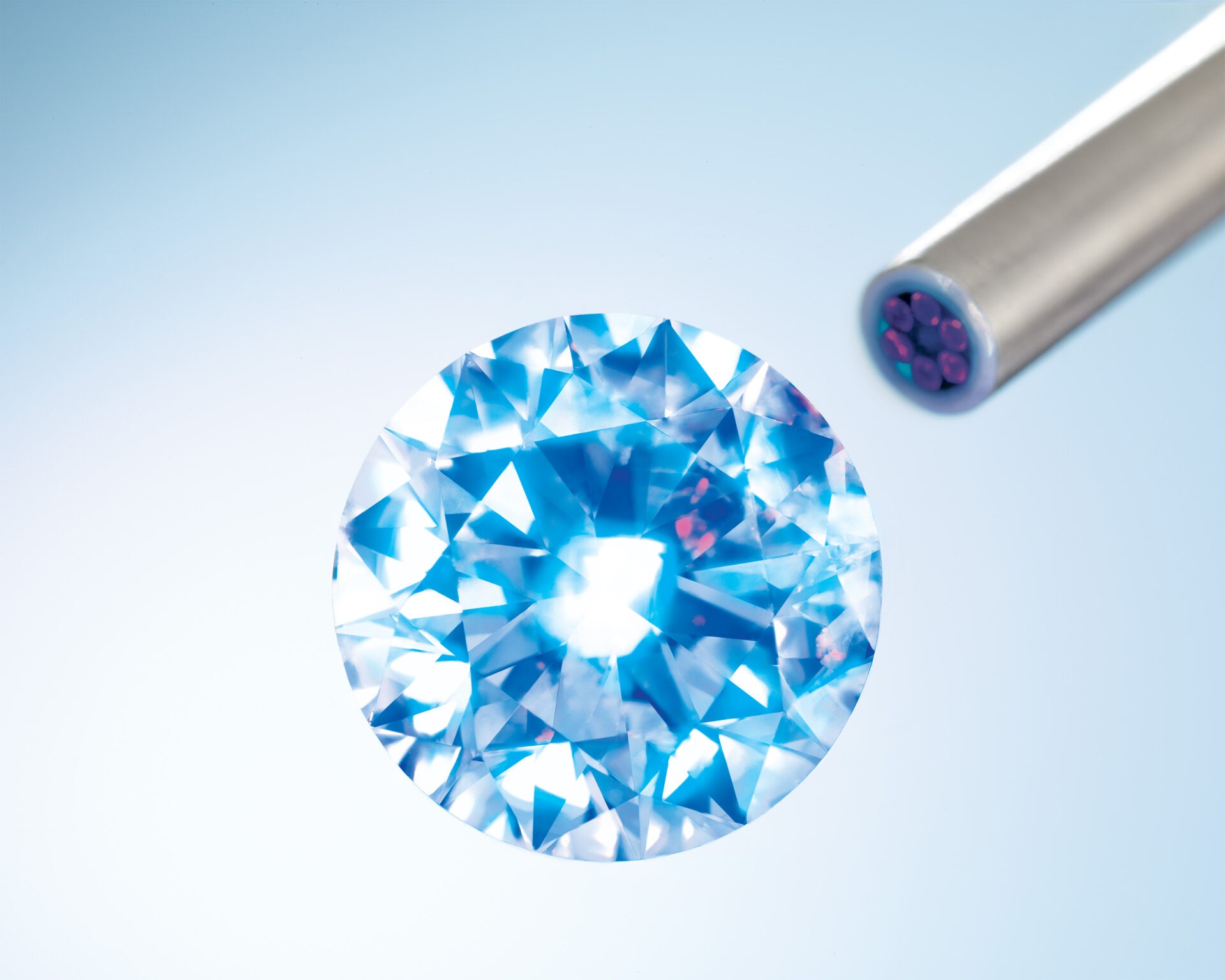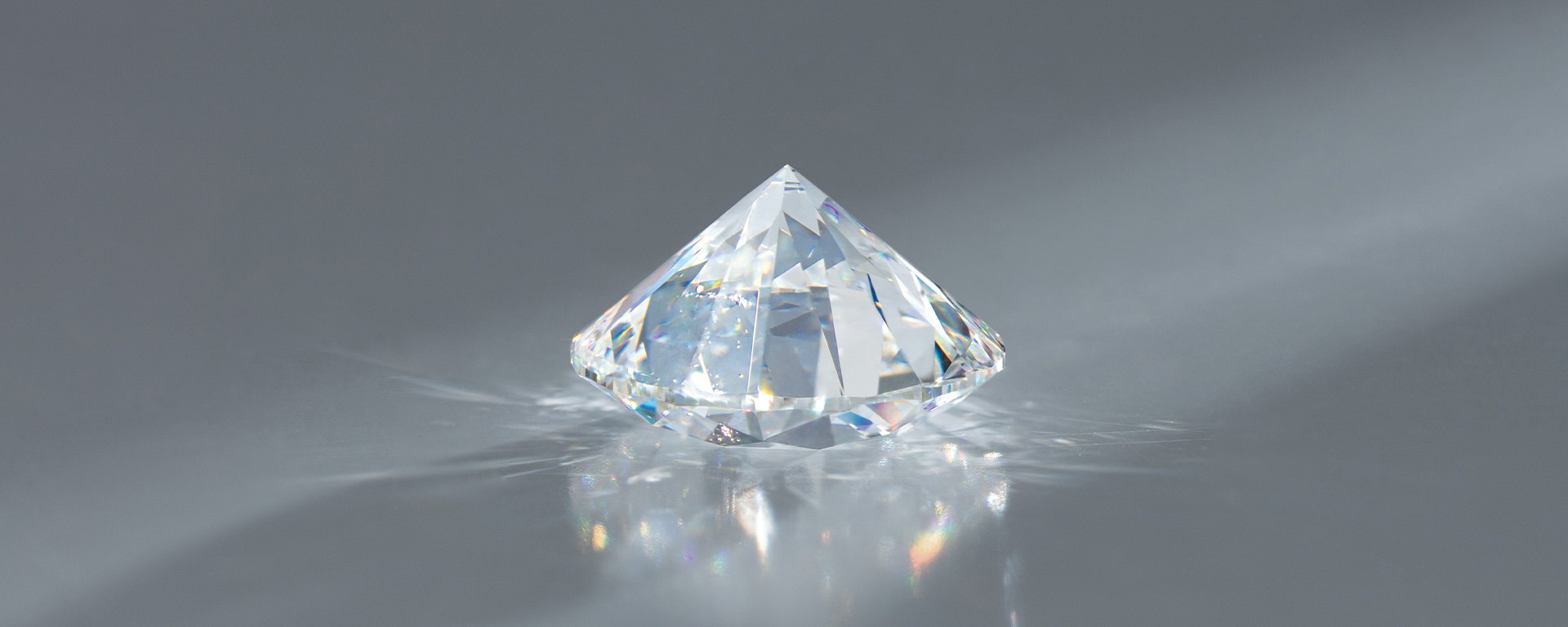Update your sales tactics and inform your customers when selling diamonds based on color.
In the mesmerizing world of diamonds, every subtle nuance plays a crucial role in their beauty and value. Among these factors, which we call the 4Cs of Diamonds, color holds a special significance in determining the value of these popular gemstones. It’s vital to have a basic understanding of diamond color when selling to your customers as this attaches greater personal value to the sale.
Click here to learn more about diamond cut.
Let’s break down the important talking points when it comes to diamond color and how diamonds are graded as well as tips for you to use when selling diamonds based on color.
What is Diamond Color?
Diamond color refers to the presence or absence of color within a diamond. The Gemological Institute of America® (GIA), a renowned authority in diamond grading, developed a standardized color grading scale that ranges from D (colorless) to Z (light yellow or brown). The less color a diamond exhibits, the higher its value and rarity are.
Understanding the Diamond Color Grading Scale
The GIA Color Scale, often called the D-to-Z scale, is the most widely used diamond color grading system in the world. The scale does not measure the actual color or hue of the diamond, but rather a combination of tone (darkness or lightness) and saturation (intensity). Essentially, the scale looks at how noticeable the color is in the diamond as that plays an important role in whether or not someone wants to make the purchase.
The scale ranges from a colorless appearance to light yellow or brown, which are the most common hues exhibited in diamonds.
- Colorless Diamonds (D-F): These diamonds are truly rare and display no discernible color. They exude a captivating brilliance that showcases their exceptional purity.
- Near Colorless Diamonds (G-J): These diamonds exhibit minimal traces of color that are often undetectable to the untrained eye. They offer an excellent balance of beauty and value.
- Faint Yellow Diamonds (K-M): With a faint yellow hue, these diamonds still possess considerable charm. When expertly cut, they can radiate a beautiful sparkle.
- Very light to Light Yellow Diamonds (N-Z): As we move further down the color grading scale, diamonds in this range exhibit increasingly noticeable yellow or brown tones. They can still be prized for their unique appeal, especially when used creatively in jewelry designs.


Grading Diamonds According to Color
Diamonds are graded in controlled conditions by comparing them to a series of round, brilliant-cut diamonds of known color. These are known as masterstones — each representing the least amount of color within its color range. The masterstones, environment, grader, and even what the grader is wearing all play an important role in consistently grading diamonds.
The masterstones are placed table down because you can best perceive color through the pavilion. The best environment to adequately view color is in a neutral-colored room — colored walls and furnishings can reflect in the diamond — with daylight equivalent fluorescent light bulbs. While these conditions aren’t always possible in the average jewelry store, they are what you can expect in a grading lab. Finally, quality training and practice is vital to consistently grading diamonds.

Factors That Impact Diamond Color
Fluorescence
According to GIA, approximately 35% of gem-quality diamonds emit a visible light called fluorescence when exposed to ultraviolet light. The sun and fluorescent light can emit this form of radiation. If a diamond emits a strong blue fluorescence, it can make light yellow diamonds appear nearly colorless in the daylight as blue cancels out yellow. However, if fluorescence is too strong, it can make the diamond appear cloudy or oily.
Treatments
Treatments are human-controlled processes that can improve the overall appearance of a diamond. The impact of treatments on diamond value largely depends on the type of treatment, the quality of the treatment, and the market perception of treated diamonds at the time. As it pertains to color, some diamonds receive a high temperature high pressure treatment (the same factors in diamond growth) to remove color, which result in a higher color grade.
Irradiation can also be used to benefit the apparent color of a diamond but can be temporary or altered when exposed to heat.
Regardless of its impact to value, any diamond treatments should be disclosed when both buying and selling diamonds.
Cut
How the diamond is cut can also impact the visibility of color within the diamond. Cuts with larger facets, such as the step-cut square, asscher, emerald, and cushion cuts, help in masking color as light passes through the diamond. The facets of round brilliant, radiant, and oval cuts create a light dispersion that optimizes brilliance and sparkle within the diamond, distracting from the appearance of color.

What About Colored Diamonds?
Much of the information covered so far pertains largely to colorless diamonds; however, there are many diamonds that exhibit fancy colors that are extremely rare and desirable, such as yellow, blue, pink, green, and orange. Unlike the diamonds graded using the D-to-Z color scale that are graded on their absence of color, these diamonds are graded on the intensity of their color, specifically their hue, tone, and saturation. Their value increases as the color deepens. These diamonds are graded on a completely different scale ranging from faint to fancy deep.
Tips for Selling Diamonds Based on Color
Now that the basics of diamond color have been explored, let’s touch on a few tips to follow when selling diamonds based on their color grade.
1. Understand Needs and Preferences
Gain an understanding of how your customer plans to wear their diamonds. What metal color do they want the diamonds set with? Will they wear them with other jewelry? Do they need to match the quality of other diamonds they wear? This will give you a good starting point to continue the conversation.
2. Educate Your Customer
Showcase your knowledge of diamond color and share that information with your customer. Compare diamonds of different color grades so they can see the subtle nuances that impact the price. When they can make a more informed buying decision, they can appreciate the value of their purchase even more.
3. Highlight the Rarity
Emphasize the rarity of colorless and near-colorless diamonds so that your customer understands how that influences the value of the purchase. This will make the diamond much more desirable and prized in the eyes of the customer.

Diamond Color: One Facet in a World of Optical Brilliance
Diamond color holds immense significance in determining a diamond’s beauty and value. By understanding the basics of diamond color grading, the impact of color on value, and effective selling strategies, you can elevate your diamond sales and provide an exceptional customer experience.
However, color is only one factor when describing what makes a diamond so desirable. Empower yourself with knowledge on each of the 4Cs of Diamonds and help each customer find their perfect diamond.

Heather Fontenot
Senior Director, Diamonds & Gemstones
Heather joined the Stuller loose stone merchandising team in August 2015 after attaining her bachelor's degree in Business Management from the University of Louisiana at Lafayette. Her natural curiosity and love of all things that sparkle and shine has pushed her to learn as much as she can about Earth's most precious possessions.
